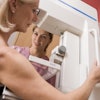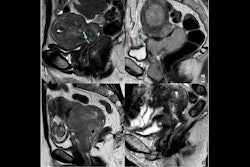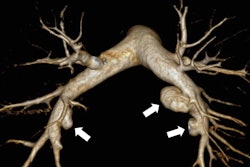Women’s participation in cervical cancer or colorectal cancer screening could be boosted with self-sampling kits offered during breast cancer screening, suggest findings published August 13 in PLOS Medicine.
A team led by Dr. Anne Helgestad from Aarhus University in Denmark found that when women were offered cervical or colorectal cancer self-sampling kits during breast screening, participation increased.
“The fact that we successfully implemented it within the ongoing national screening program, achieving both a very high participation rate and high satisfaction among the participants, was an exceptionally positive outcome,” Helgestad told AuntMinnieEurope.com.
Screening participation rates for cervical and colorectal cancer remain middling despite their effectiveness at reducing cancer-related morbidity and mortality. This trend is the same for Denmark, the U.S., and other countries.
The researchers highlighted that interventions could improve screening participation. They studied whether leveraging the higher participation rate in breast cancer screening could serve as an opportunity to offer self-sampling kits to nonparticipants in cervical and colorectal cancer screening.
During breast cancer screening, clinicians offered women self-sampling kits, including stool tests and vaginal kits for high-risk human papillomavirus (HPV) testing. Clinicians also provided face-to-face administrative checkups.
For the study, the researchers included 27,116 women. Of these, 5,618 were in the intervention group that offered self-sampling while 21,498 were in the control group, where self-sampling was not offered. The study did not include women who did not participate in breast cancer screening.
Six months after the intervention, total coverage increased by 4.8 percentage points for cervical cancer screening participation and 3.8 percentage points for colorectal screening participation compared with the control group.
| Screening rates for women offered/not offered self-sampling kits during breast cancer screening | |||
|---|---|---|---|
| Screening test | Control group participation | Interventional group participation | p-value |
| Cervical cancer | 83.5% | 88.3% | < 0.001 |
| Colorectal cancer | 76% | 79.8% | < 0.001 |
Also, among women overdue for cervical cancer screening, participation in the intervention group was 32% compared with 6.1% in the control group (p < 0.001). For colorectal cancer screening, participation among overdue women in the intervention group was 23.8% compared with 8.9% in the control group (p < 0.001).
The study authors highlighted that self-sampling interventions are a feasible and effective approach during breast cancer screening. They also wrote that these results underscore the benefits of offering combined screening with public health services by improving engagement in cancer screening programs.
Helgestad told AuntMinnieEurope.com that while this initiative may not have immediate significance for radiologists, increased participation could lead to a rise in radiological exams related to cancer diagnostics.
She added that when implementing such initiatives, women should not feel pressured into participating in screening.
“We believe that it is important that the check-up and self-sampling remain options they can choose freely, without any external pressure,” Helgestad said. “Additionally, it may be valuable to consider how the study's findings can be realistically applied once the study concludes. Lastly, the interventions should be meaningful to the participants.”
She said that the team is keen to examine outcomes over a longer period to assess whether participants continue to engage in screening programs when offered in the future.
“Moreover, we are working on implementing the approach in the Central Denmark Region, initially on a smaller scale, to evaluate its effectiveness in a real-world setting,” Helgestad said.
The full findings can be accessed here.



















